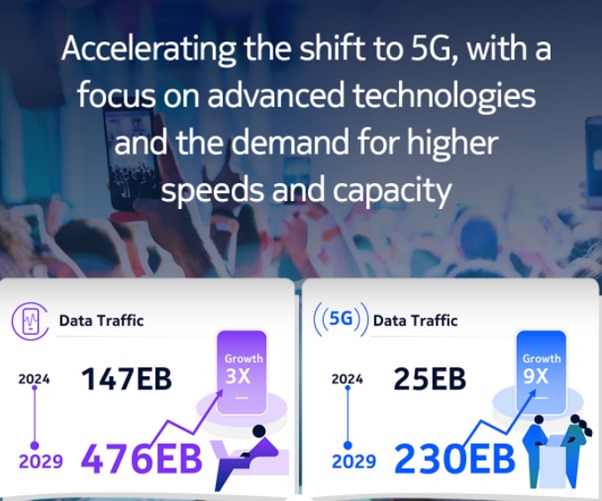
Nokia MEA Mobile Broadband Index 2024: 5G driving rapid digital transformation
Research from Nokia reveals that 60% of CSPs in MEA region are adopting 5G to enhance their digital transformation. While 4G subscriptions are projected to stabilize by 2027, 5G adoption is anticipated to surge dramatically, signifying a pivotal shift in the region's technological landscape.
In addition, Nokia’s Mobile Broadband Index Report 2024 highlights the continued rapid adoption of 5G technology in the region, projecting that by 2029, 5G subscriptions will reach 519 million, with 48% of total data traffic expected to be driven by 5G.
5G is playing a critical role in the region’s future connectivity landscape, with nearly 23% of all mobile subscriptions in the MEA region expected to be 5G by 2029. This accelerated adoption is particularly evident in the Gulf Cooperation Council (GCC) sub-region, where 90% of all mobile subscriptions are projected to be 5G by 2029. This growth is largely driven by significant government investments in 5G infrastructure and robust support for advanced connectivity solutions.
The rise of 5G technology is not only increasing the number of subscriptions but also transforming the region’s data traffic dynamics. By 2029, 5G and 4G networks are expected to account for over 90% of the total data traffic in the MEA region. In the GCC alone, 90% of all data traffic is predicted to be carried over 5G networks.
Fixed Wireless Access (FWA) powered by 5G technology is also increasingly being adopted, growing from 11% in 2022 to 38% by 2029. This surge in FWA adoption is driven by the need for faster internet speeds and lower latency, particularly in underserved or remote areas.
Mikko Lavanti, Senior Vice President for Mobile Networks, MEA at Nokia, said: “The adoption of 5G is increasingly important for countries across MEA to meet the rising demand for data services. This transition accelerates digital transformation while allowing CSPs to unlock new revenue opportunities. Nokia’s services empower CSPs to unlock the full potential of their networks, delivering advanced connectivity solutions that are critical for the region’s development.”









